Q
What is the Rim Size of Honda Jazz?
The rim sizes of different models of the Honda Jazz vary. Among them, the front and rear tire specifications of the 2019 Honda Jazz 1.5 S, 1.5 E, and 1.5 Hybrid models are all 175/65R15, and the spare tire specification is also 175/65R15. For the 2019 Honda Jazz 1.5 V, the front and rear tire specifications are 185/55R16, while the spare tire specification is 175/65R15. Rim size has an impact on both the performance and appearance of a vehicle. Larger rim sizes can enhance handling but may reduce fuel economy, while smaller rim sizes generally offer better fuel economy. Meanwhile, the rim size needs to be compatible with the tires. When replacing rims or tires, make sure they meet the vehicle's design requirements to ensure the safe driving of the vehicle.
Special Disclaimer: This content is published by users and does not represent the views or position of PCauto.
Related Q&A
Q
What Segment is Honda Jazz?
The Honda Jazz is classified as a B-Segment small hatchback in the Malaysian market. This segment is typically characterized by flexible handling, economic practicality, and convenience for urban commuting, making it suitable for Malaysia's narrow streets and high fuel costs. The Jazz has become a popular choice in this segment, especially among young families and urban commuters, thanks to its iconic "Magic Seat" flexible seating design, efficient Earth Dreams engine technology, and spacious interior within a compact body.
In the Malaysian market, competing models in the same segment include the Toyota Yaris and Perodua Myvi. However, the Jazz is well - known for the high resale value and reliability of the Honda brand. It's worth noting that B - Segment vehicles in the Southeast Asian market generally prioritize fuel economy and maintenance costs. The combination of the Jazz's 1.5L i - VTEC engine and CVT transmission can achieve an actual fuel consumption of over 15 km/L, meeting the local consumers' demand for practicality.
In addition, this vehicle line was upgraded to a hybrid version in some global markets in 2021. However, the current models in Malaysia still mainly use traditional fuel power. Whether a new energy version will be introduced in the future depends on Honda's regional strategic adjustments.
Q
What is the Reslae Value of Honda Jazz?
The resale value of the Honda Jazz in the Malaysian used - car market is relatively stable. This is due to its reliable quality, low fuel consumption, and the high local recognition of the Honda brand. Depending on the vehicle's age, mileage, and condition, a 3 - to 5 - year - old Jazz can usually retain 50% - 65% of its original price. The Hybrid models may have a 5% - 8% premium because of their energy - saving features.
The key factors affecting its residual value include regular maintenance records (especially the maintenance of the CVT transmission), the body color (white and silver are more popular), and whether it is still within the original factory warranty period. It is recommended that car owners keep complete maintenance receipts and use original factory parts to maximize the vehicle's value retention.
Among its peers, the used - car price performance of the Jazz is better than some of its competitors. This is related to its flexible space design (such as the ULTRA seat system) and low failure rate. However, the specific transaction price still needs to refer to the real - time data on used - car platforms like Carlist or mytukar.
It's worth noting that the tax - exemption policy for domestic cars introduced in some regions after 2020 has slightly affected the price fluctuations of imported used cars. But as a cost - effective urban vehicle, the demand for the Jazz remains strong in urban areas like the Klang Valley.
Q
How Many CC is Honda Jazz?
The Honda Jazz models available in the Malaysian market are mainly equipped with a 1.5 - liter naturally aspirated engine with a displacement of 1497cc (cubic centimeters). This is a common 'golden displacement' for compact hatchbacks, balancing fuel economy and power performance. This engine uses Honda's i - VTEC technology, capable of outputting approximately 120 horsepower and 145 Nm of torque. It is paired with a CVT transmission or a 6 - speed manual transmission (depending on the version), which is suitable for urban commuting and flexible driving.
It's worth noting that while the displacement (CC) affects power output, the actual driving experience also depends on engine tuning, vehicle weight, and the matching of the transmission system. For example, Honda has optimized the combustion efficiency of the Jazz through Earth Dreams technology, making the torque more abundant at low speeds. Malaysian customers can also pay attention to the minor changes in different model years when making a choice. For instance, some versions after 2020 have upgraded the Honda SENSING safety system.
Similar models in the same class, such as the Toyota Yaris or Perodua Myvi, also use a similar displacement, but they have different technological focuses. It is recommended to take test drives for comparison. Additionally, Malaysia's automotive tax structure gives vehicles with a displacement below 1.5 liters a price advantage, which is also one of the reasons why the Jazz has been popular for a long time.
Q
What is the Engine in Honda Jazz?
The Honda Jazz available in the Malaysian market is equipped with a 1.5-liter i-VTEC naturally aspirated gasoline engine. This engine is well - known for its high efficiency and reliability. It has a maximum output power of approximately 120 horsepower and a peak torque of 145 Nm, making it suitable for city driving and daily commuting while also taking fuel economy into account.
This engine adopts Honda's classic i-VTEC technology, which optimizes power output and fuel consumption through an intelligent variable valve timing and lift system. Paired with a CVT continuously variable transmission, it offers a smooth driving experience.
In addition, the Honda Jazz also comes in a hybrid version (such as the e:HEV). It combines a 1.5-liter Atkinson cycle engine with a dual - motor system, further enhancing energy - saving efficiency, which is ideal for consumers with higher environmental protection requirements.
For Malaysian users, the durability and low maintenance cost of this engine are also among the reasons for its popularity. Moreover, Honda's after - sales service network covers the whole country, providing convenience for car owners. When it comes to the used - car market, the engine of the Jazz also has a relatively high resale value, making it an economical and practical choice.
Q
What is the Gearbox Type of Honda Jazz?
The transmission types vary among different versions of the Honda Jazz. Specifically, the 2019 Honda Jazz 1.5 S, 1.5 E, and 1.5 V versions all come with a CVT (Continuously Variable Transmission). This type of transmission offers a smooth shifting experience, making the driving process even more seamless and also helping to improve fuel efficiency.
On the other hand, the 2019 Honda Jazz 1.5 Hybrid version is equipped with a DCT (Dual-Clutch Transmission). A dual-clutch transmission allows for rapid gear changes and highly efficient power transfer, which can enhance the vehicle's dynamic performance and driving pleasure to some extent.
Each type of transmission has its own unique features. Consumers can choose the appropriate model according to their driving habits and needs.
Q
What is the PCD Size of Honda Jazz?
The PCD (Pitch Circle Diameter) size of the Honda Jazz is 4x100, which means its wheels have 4 bolt holes, and the centers of these holes are distributed on a circle with a diameter of 100 millimeters. This specification is very common in the Malaysian market and is suitable for many economy and compact cars. Understanding the PCD size is crucial when replacing wheels or upgrading tires because if the PCD doesn't match, the wheels won't be installed correctly, which may affect driving safety.
Apart from the PCD, when choosing wheels, you also need to pay attention to the center bore diameter (CB) and the offset value (ET) to ensure full compatibility. Owners of the Honda Jazz can choose factory - spec wheels or wheels from other brands that meet the 4x100 PCD when modifying their wheels. However, it is recommended to choose certified products to ensure quality and safety.
In addition, when modifying wheels, you need to pay attention to the traffic regulations in Malaysia to ensure that the modified vehicle meets local standards and avoid penalties for violations.
Q
Does Honda Jazz Support Apple Carplay?
Yes, some models of the Honda Jazz in Malaysia are indeed equipped with Apple CarPlay, especially the higher - spec versions like the Honda Jazz RS or Honda Jazz Hybrid. These models usually come with a touch - screen infotainment system that's compatible with Apple CarPlay. This allows users to connect their iPhones via a data cable and use functions such as navigation, music, and making calls. It's important to note that there might be differences in Jazz models of different years and configurations. It's recommended to confirm the specific features with the dealer before purchasing. The addition of Apple CarPlay significantly enhances driving convenience, enabling users to use common phone functions more safely without having to take their eyes off the road to operate their phones.
Moreover, the Honda Jazz is well - loved by Malaysian users for its flexible interior space design and fuel efficiency. It's ideal for city commuting and small families. If you have high requirements for in - car connectivity features, you can also look into similar configurations of other models in the same class, such as the Toyota Yaris or Mazda 2, to make a more suitable choice.
Q
What is the Tyre Brand of Honda Jazz?
The original-equipment tire brands for the Honda Jazz in the Malaysian market may vary depending on the model year and configuration. Common tire - supplying brands include mainstream manufacturers such as Dunlop, Yokohama, or Bridgestone. These brands are well-known for their wear resistance and wet - surface performance, which meet the requirements of the rainy climate in Southeast Asia. Car owners can confirm the specific tire model through the sidewall markings or the user manual. For example, the Dunlop ENASAVE EC300+ is a common choice for high-efficiency and energy-saving tires in recent years.
It's worth noting that since tires are consumable items, when replacing them, in addition to the original-factory specifications, you can also consider silent and comfortable products like the Michelin Primacy 4 or the Continental UC6. However, you must ensure that the size (such as 185/55 R16), load index, and speed rating meet the matching requirements of the Jazz's suspension setup and ABS system.
Regularly checking the tire pressure (it is recommended to do it once a month) and wheel alignment can extend the tire life. Especially on the high-temperature roads in Malaysia, the rubber ages more quickly. If the tread depth is found to be less than 1.6 millimeters, you should replace the tires immediately to comply with JPJ regulations.
Q
Is Honda Jazz a Good Car? Learn the Pros and Cons Here!
The Honda Jazz is a highly favored small hatchback in Malaysia. Its advantages include a flexible body size that is suitable for city driving, and it offers economical fuel consumption. The 1.5-liter i-VTEC engine it is equipped with provides smooth and reliable power. The interior space is cleverly designed. In particular, the "Magic Seats" allow for flexible adjustment of the storage space, making it suitable for families or young consumers. Moreover, the Honda brand has an extensive after-sales service network in Malaysia, making maintenance relatively convenient.
However, it does have some drawbacks. Its sound insulation is average, and wind noise is quite obvious when driving at high speeds. The rear suspension is tuned to be on the stiffer side, which affects comfort to some extent. Also, its configuration may not be as rich as that of its competitors in the same class.
For buyers with a limited budget who value practicality and brand reliability, the Jazz is a worthy option to consider. But if you're looking for higher comfort or more advanced technological features, you may need to compare other models.
In Malaysia's hot and rainy climate, it is recommended to regularly check the air-conditioning system and the anti-rust condition of the chassis to extend the vehicle's lifespan.
Q
What is the Width of Honda Jazz?
The body width of the Honda Jazz is 1,694 millimeters. This dimension is considered moderate among the common city compact cars in Malaysia. It can ensure that the interior lateral space is sufficient for three adults to sit comfortably, and at the same time, it can also flexibly maneuver through the narrow streets of Kuala Lumpur or the old shopping mall parking lots. As a global strategic model of Honda, the compact body design of the Jazz is particularly suitable for the winding mountain roads and congested urban roads in Malaysia. The MM concept (minimizing the mechanical space and maximizing the interior space) it adopts enables the 1,694-millimeter body width to achieve a class - leading interior space utilization rate. The magic seats in the rear can be folded in multiple combinations, which is very practical when carrying large items such as potted plants or durians.
It's worth noting that when purchasing a compact car in Malaysia, besides paying attention to the body width, you should also take note of the overall width data when the rear - view mirrors are unfolded. This is especially important for the local road conditions where motorcycles often shuttle through. The electric folding rear - view mirror function of the Jazz can handle this situation very well.
Latest Q&A
Q
How many types of BMW 5 Series are there?
Currently, there are six different models of the BMW 5 Series, namely the 2025 BMW 5 Series 530i M Sport, 2024 BMW 5 Series 520i, 2024 BMW 5 Series 520i M Sport, 2021 BMW 5 Series 530e M Sport, 2021 BMW 5 Series 530i M Sport, and 2019 BMW 5 Series 520i Luxury. These models vary in terms of price, power performance, and configuration. The prices range from RM 328,800 to RM 402,800. Some models are powered by pure gasoline engines, while others are gasoline hybrids. In terms of configuration, features such as the seat adjustment method, audio brand, and the number of speakers also have their own characteristics. Consumers can make a choice based on their own budget and needs.
Q
How many Litres is a BMW 5 Series engine?
Currently, there are six different models of the BMW 5 Series, namely the 2025 BMW 5 Series 530i M Sport, 2024 BMW 5 Series 520i, 2024 BMW 5 Series 520i M Sport, 2021 BMW 5 Series 530e M Sport, 2021 BMW 5 Series 530i M Sport, and 2019 BMW 5 Series 520i Luxury. These models vary in terms of price, power performance, configuration, etc. The prices range from RM 328,800 to RM 402,800. Some are powered by pure gasoline engines, while others are gasoline hybrids. In terms of configuration, features such as the seat adjustment method, audio brand, and the number of speakers also have their own characteristics. Consumers can make a choice based on their own budgets and needs.
Q
What is the price of Ferrari GTC4Lusso T?
The price of the Ferrari GTC4Lusso T in Malaysia is approximately between RM1.5 million and RM1.8 million. The specific price may vary depending on optional configurations, taxes, and dealer policies. This car is equipped with a 3.9-liter V8 twin-turbocharged engine, with a maximum output power of 610 horsepower. It can accelerate from 0 to 100 km/h in just 3.5 seconds, combining high performance and practicality. It features a four-seat design and is equipped with a 4RM-S four-wheel drive system, making it suitable for car owners who pursue driving pleasure and daily comfort.
In the Malaysian market, Ferrari models are usually sold through official authorized dealers. It is recommended that consumers interested in purchasing directly contact the dealers to obtain the latest quotes and arrange test drives. In addition, Malaysia imposes relatively high tariffs on imported luxury cars, which is also an important factor affecting the final selling price. The price ranges of comparable models in the same class, such as the Lamborghini Urus or the Aston Martin DBX, are also similar. Consumers can make a comparison and choice based on their personal preferences and needs.
Q
What are the differences between GTC4Lusso and GTC4Lusso t?
The main differences between the Ferrari GTC4Lusso and the GTC4Lusso T lie in the powertrain and the drive mode. The GTC4Lusso is equipped with a 6.3 - liter V12 naturally - aspirated engine and features four - wheel drive. It has a maximum horsepower of 690 and a peak torque of 697 Nm. On the other hand, the GTC4Lusso T uses a 3.9 - liter V8 twin - turbocharged engine and has rear - wheel drive, with a maximum horsepower of 610 and a peak torque of 760 Nm. Both cars continue Ferrari's iconic high - performance performance. However, the V12 version is more suitable for drivers who pursue ultimate power and four - wheel drive stability, while the V8 version focuses more on flexible handling and fuel economy.
In the driving environment of Malaysia, the rear - wheel drive design of the GTC4Lusso T can provide a more enjoyable driving experience in dry climates. Meanwhile, the turbocharged engine can output abundant torque at low speeds, making it more suitable for daily driving on city roads and highways. The four - wheel drive system of the GTC4Lusso has an advantage on rainy or slippery roads.
Both models inherit Ferrari's classic 2 + 2 seat layout and hatchback design, which not only retains the sports genes of a sports car but also takes practicality into account. They are among the few high - performance models in the Ferrari brand that are suitable for family use. Ferrari enthusiasts in Malaysia can choose the more suitable version according to their driving habits and needs.
Q
How many Ferrari GTC4Lusso T were made?
The Ferrari GTC4Lusso T is a high - performance four - seat GT model produced by the Italian luxury sports car brand Ferrari from 2016 to 2020. As the V8 turbocharged version of the GTC4Lusso, it is mainly targeted at customers who pursue driving pleasure and daily practicality. According to the publicly available production data, the total global production of the GTC4Lusso T is approximately 3,000 units. The exact figure hasn't been fully disclosed, but it's far lower than the production volume of its V12 version. So, this car is relatively rare and holds its value well in the second - hand market.
This model is equipped with a 3.9 - liter V8 twin - turbocharged engine, with a maximum output power of 610 horsepower. It adopts a rear - wheel - drive layout and is paired with a 4WS four - wheel steering system, which provides strong power while also ensuring handling flexibility. For car enthusiasts in Malaysia, the right - hand - drive version of the GTC4Lusso T was once introduced in the local market through official channels in limited quantities. However, due to its small number and high price, it's rarely seen on the road.
It's worth mentioning that this car is the last model in Ferrari to feature the "Shooting Brake" shooting - brake design. It has since been replaced by new models such as the Roma. Its unique exterior design and practical rear - seat space make it a highly recognizable model in Ferrari's GT series.
View MoreRelated News
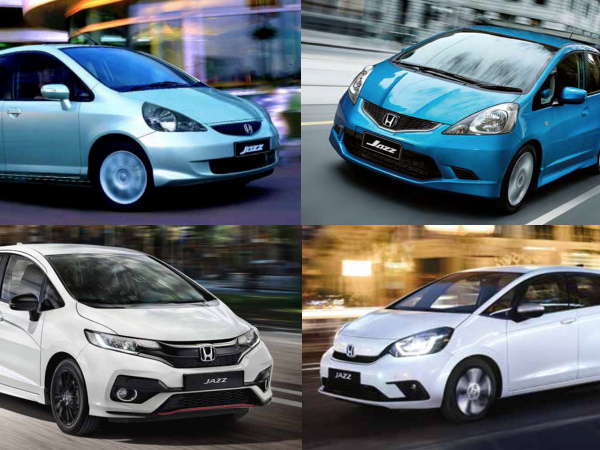
Auto Arena: Which generation of Honda Jazz (Fit) is your favorite?
LienMay 21, 2024

The 2025 Honda Prelude Is Back: Hybrid-Powered Coupe with Type R Chassis Tech
JohnAug 4, 2025

Honda Chief Engineer Goes Viral for Hairstyle, Formerly Led EV Dynamic Tuning
RobertJul 31, 2025
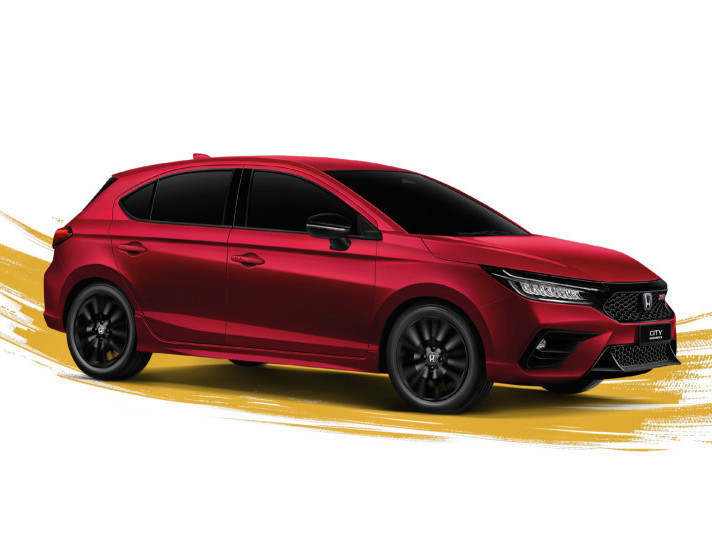
Honda City Hatchback Interior: Surprising Space Inside a Compact Body
WilliamJul 16, 2025
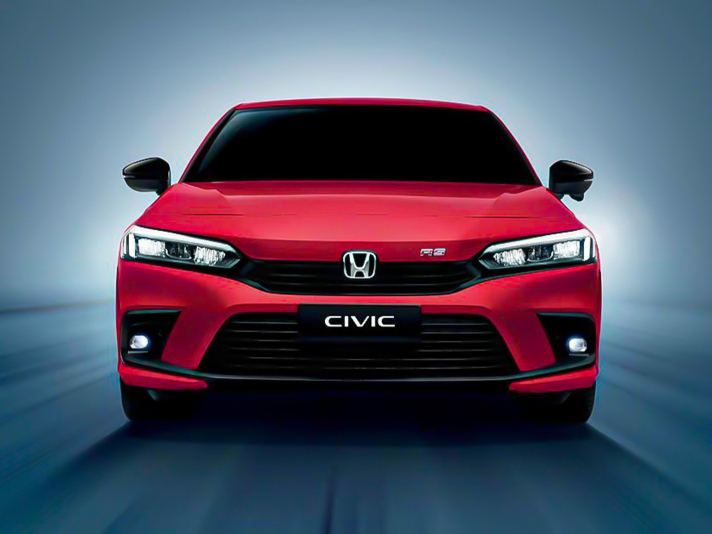
Honda Civic Interior Revealed: A Comprehensive Analysis of Civic’s Interior Charm
Kevin WongJul 10, 2025
View More



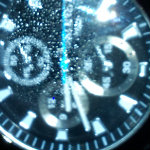





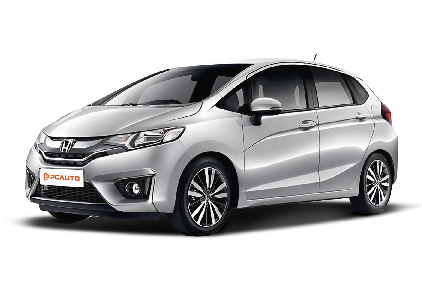
 Cars
Cars




Pros
Cons